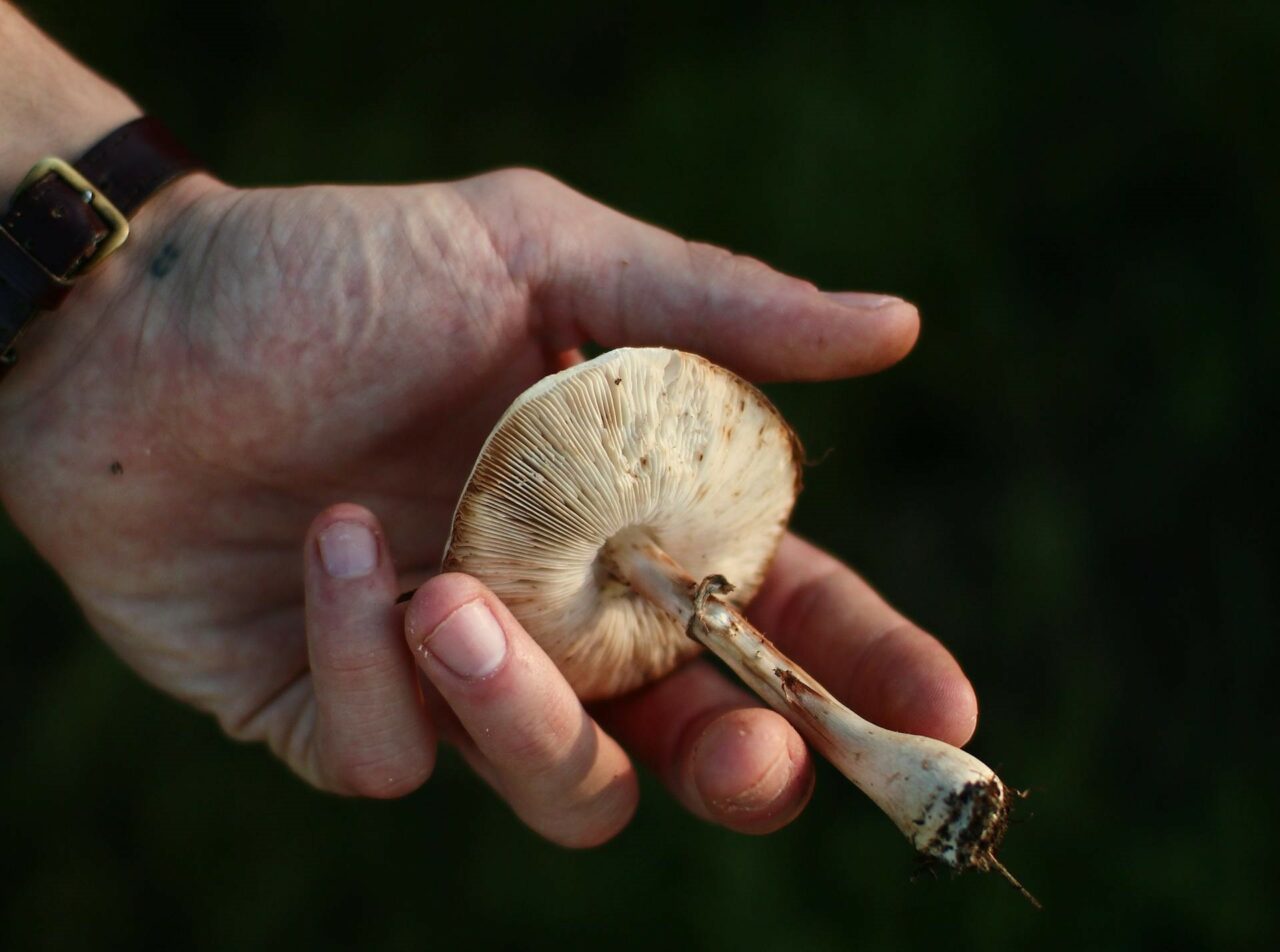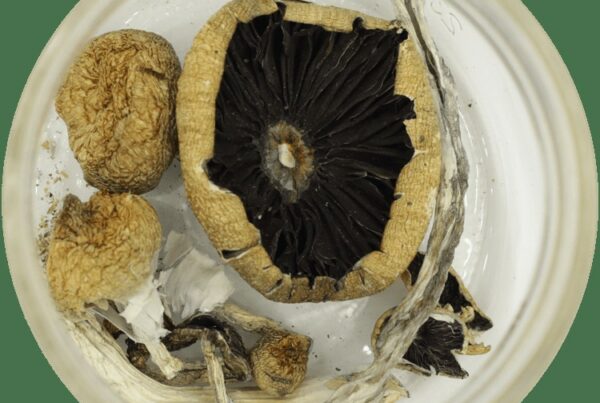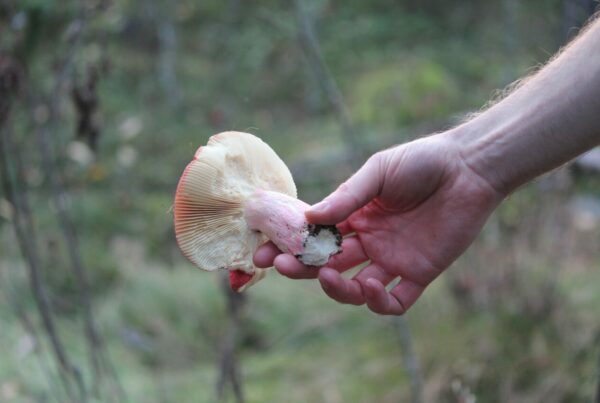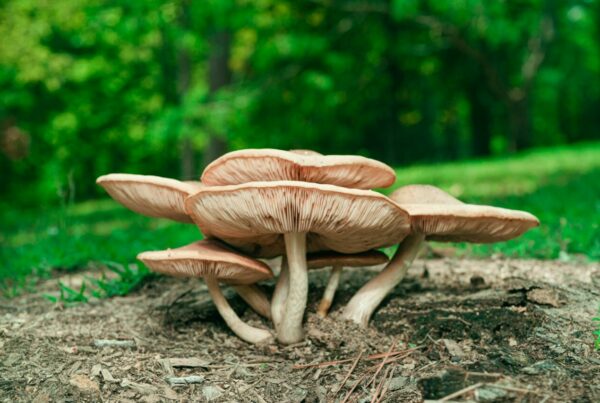Psilocybin mushrooms, traditional psychedelics that function like LSD as a serotonin 5-HT2A receptor agonist, are currently under investigation for psilocybin-assisted therapy for a range of mental health disorders. These disorders include anxiety, major depression, emotional distress, migraines, and cluster headaches.
To understand how shrooms can be beneficial in treating these conditions, it is essential to delve into how they are metabolized in the body. Such understanding enables both researchers and users to discern how the active compound produces psychological and therapeutic impacts. This article offers a basic overview of the pharmacology and pharmacokinetics of psilocybin.
[toc]
Key Takeaways:
- Approximately half of the ingested psychedelic fungi is absorbed and dispersed throughout the body.
- The compound in the fungi undergoes dephosphorylation primarily in the liver, through the enzyme alkaline phosphatase.
- About 3.4% of the compound is expelled in its original form within a day, with most of it being excreted as a stable metabolite.
What Does Pharmacokinetics Mean?
Pharmacokinetics (PK) is a scientific field that explores how substances like drugs are dealt with by the body once they’re ingested. While it’s closely tied to pharmacodynamics – the study of how a compound interacts with the body -, PK specifically focuses on four main areas: absorption, distribution, metabolism, and excretion (ADME).
Grasping these processes permits healthcare professionals to prescribe the most appropriate medications with the least risk. It also helps them to customize treatments according to each patient’s unique physiological characteristics and lifestyle.
How Does Pharmacokinetics Relate to Psilocybin?
Psilocybin and psilocin, the primary active compounds in certain magic mushroom species, have garnered substantial attention from both researchers and users. Pharmacokinetics studies how the body interacts with mushrooms containing psilocybin, thus offering insights into their potential effects, whether medicinal or recreational.
These compounds are referred to by various names, such as “magic,” “psychedelic,” “medicinal,” or “sacred.” The consumption of fungi containing these compounds is widespread. The Therefore, it’s crucial to consider these factors when designing an administration protocol to maximize the absorption of the compound and its effects. Once absorbed, the compound travels through the bloodstream, reaching various bodily tissues. The extent to which it can affect the body depends on how well it is distributed. Psilocin, the active metabolite of psilocybin, has a high affinity for the central nervous system, particularly the brain. The distribution of the compound within the body may be influenced by several factors: The body breaks down psilocybin into psilocin through metabolism. The liver, specifically the enzyme alkaline phosphatase, plays a crucial role in this process. The efficiency of this metabolic process can significantly affect the compound’s potency. Several factors can influence how efficiently psilocybin is metabolized into psilocin: Excretion is the final phase of the pharmacokinetic process, where the compound is eliminated from the body. The majority of psilocin gets excreted in the urine, while a smaller portion is eliminated through feces. However, it’s worth noting that after oral administration, psilocybin cannot be detected in the circulatory system, feces, or urine. The rate of excretion can be influenced by several factors: Overall, understanding the pharmacokinetics of psilocybin can help optimize its use and effectiveness in various applications, from therapeutic use to recreational consumption. The process by which the body digests and metabolizes mushroom strains involves increasing their water solubility to facilitate efficient renal clearance. This transformation is crucial for the activation of their effects. The liver is primarily responsible for this metabolism, which occurs in two main stages: After absorption, the compound is metabolically converted in the liver. The primary metabolic reaction is dephosphorylation, where psilocybin is changed into psilocin by the enzyme alkaline phosphatase. This conversion predominantly takes place in the liver. Moreover, secondary metabolic reactions can generate various byproducts. Psilocin then undergoes extensive Phase I metabolism in the liver to form different metabolites: Phase II metabolism is triggered by the UDP-glucuronosyltransferase enzyme family, with UGT1A10 being the primary pathway. Psilocin-O-glucuronide is the main metabolite found in urine, with 2% to 4% of psilocin being expelled unchanged. Distribution pertains to the process by which psilocin, once in the bloodstream, is disseminated throughout the body. Given its lipophilic nature, psilocin is capable of crossing the blood-brain barrier to access the central nervous system. This process is influenced by factors such as the substance’s size, polarity, and protein-binding ability, as well as individual physiological variables like hydration status and body composition. The goal is to achieve an effective concentration at the intended site. The substance needs to reach the targeted area as dictated by the volume of distribution and remain unattached to proteins, allowing it to interact with its receptor actively. Several factors can influence the distribution process: Typically, the effects begin to manifest between 20-40 minutes after ingestion, reaching a peak at around 80-100 minutes. The effects of magic mushrooms generally last for 4-6 hours. An initial experimental study on two species demonstrated that the binding affinity sequence is 5HT2A > 5HT1A > 5HT2B [23]. It also binds to dopamine D1, 5HT1E, 5HT5A, 5HT7, 5HT6, D3, 5HT2C, and 5HT1B receptors. Psilocin acts as a partial agonist at the 5HT2A receptor, exhibiting an efficacy of about 40%. Its psychedelic effects can be associated with its partial agonist activity at 5HT1A autoreceptors. The mood-enhancing and psychotomimetic effects may be linked to the relationship between increased dopamine levels and sensations of depersonalization and euphoria. Hallucinogens work by modifying neurochemistry and receptor activity. They enhance 5HT2A agonist activity, leading to increased BDNF synthesis in the hippocampus, which subsequently promotes neurogenesis and reduces conditioned fear-related behaviours. Excretion involves the process by which the The human body expels substances through various organs such as the kidneys, lungs, skin, and the gastrointestinal tract. In the kidneys, a naturally occurring psychedelic substance is filtered in the glomerulus or secreted in the tubules; some reabsorption adds complexity to this process. The primary substance has a half-life of about 160 minutes, while psilocin’s half-life is around 50 minutes. Animal studies suggest that this substance is primarily passed out in the urine, accounting for approximately 65% within eight hours. Even after consumption, traces of the substance can be detected in smaller amounts in bile and feces. In humans, around 3.4% of the substance is expelled in its original form within 24 hours, while the majority is removed as psilocin-O-glucuronide, a more stable byproduct. This stability allows the substance to be identified in urine samples for an extended duration. There are two primary ways of substance expulsion: Most psychedelic substances follow the first-order kinetics method, reaching stable concentrations after four to five half-lives. Complete expulsion also occurs after four to five half-lives. The metabolic process differs amongst various types of fungi. Choose trusted online suppliers like Buy Shrooms Canada to avoid unintentionally consuming toxic mushrooms. Certain types, such as Agaric mushrooms, can induce strong and unpleasant effects. Therefore, it’s crucial to procure magic mushrooms from credible dispensaries, rather than dealing with unreliable street vendors or wild foraging. For medical professionals, researchers, and users alike, having a thorough understanding of shroom pharmacokinetics is crucial. This knowledge enables you to make informed decisions about dosage and timing, thus reducing potential risks. Discover the perfect psychedelic experience for you at Buy Shrooms Canada. Whether you desire a calming trip or a deeper exploration, our wide array of products is designed to meet your specific requirements. Enjoy top-quality, safe, and regulated shrooms without worrying about questionable sources or poisonous mushrooms. Indulge in the best magic mushrooms Canada has to offer, and elevate your psychedelic journey to unparalleled heights. Our products may interact with specific medications, particularly those that affect serotonin levels, such as SSRIs (Selective Serotonin Reuptake Inhibitors). SSRIs and SNRIs (Serotonin and Norepinephrine Reuptake Inhibitors) usually lessen the effects, unlike non-serotonergic antidepressants. This reduced effect can continue for up to three months after discontinuing the use of the antidepressant. No, each psychedelic substance has a unique structure that requires different metabolic processes to become active. They also bind to various receptors in the body. The way each psychedelic is administered also affects how it is absorbed. While the basic principles of absorption, metabolism, and distribution remain the same, the specific routes and effects differ from substance to substance. Yes, the form (be it fresh, powdered, or dried mushrooms) can influence the absorption rate. For example, powdered forms might be absorbed faster than whole dried ones due to quicker dissolution. Related Reading:Distribution
Factors Affecting Distribution
Metabolism
Factors Affecting Metabolism
Excretion
Factors Affecting Excretion
Distribution of Psilocin
What Affects the Distribution Process?
How Does Distribution to the Brain Take Place?
Excretion
Discover Our Range of Hallucinogenic Mushrooms
Feature Enigma Full Moon Party Gold Member Strain Type Psilocybe Cubensis OMNI Psilocybe cubensis (Thai Koh Samui) Psilocybe cubensis Potency Exceptionally high; 3.8% tryptamine content Moderate to high potency High potency Visual Characteristics Resembles a blob or Resembles cauliflower or a brain-like structure Exhibits a classic cubensis look; moderately sized Features thick white stems; caps in golden caramel color; shows noticeable blue bruising Effects Recognized as the most potent; induces intense effects Provokes a strong mental high; onset is delayed but comes with pronounced visuals Delivers potent visuals and euphoria Educate Yourself on Psilocybin Mushroom Use Through Online Resources
Frequently Asked Questions
Are there any known drug interactions between shrooms and other medications?
Do all psychedelics follow the same metabolic pathway as psilocybin?
Does the form of the shroom affect its pharmacokinetics?





